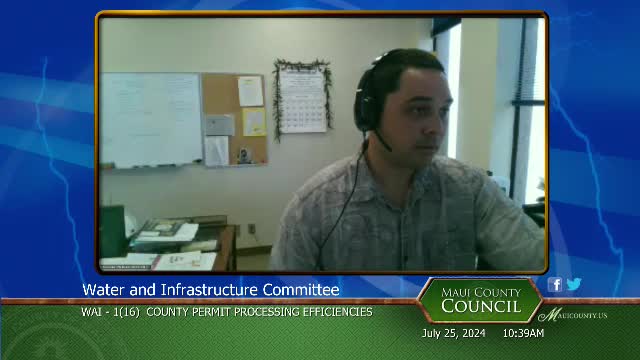Union Wages Spark Crisis in Public Service Employment
July 25, 2024 | Maui County, Hawaii

This article was created by AI summarizing key points discussed. AI makes mistakes, so for full details and context, please refer to the video of the full meeting. Please report any errors so we can fix them. Report an error »

During a recent government meeting, officials discussed the pressing issue of wage disparities between public sector employees and those in the trades, highlighting a growing concern over recruitment and retention within government roles.
One participant pointed out that many public sector workers are earning significantly less than their counterparts in the trades, which has led to a high number of vacancies in essential services. The discussion emphasized that while trades unions are successfully negotiating living wages for their members, government unions, such as HGEA and UPW, are failing to provide similar compensation. This disparity raises questions about the ability of public sector employees to afford housing, particularly as the cost of living continues to rise.
Concerns were also raised about the declining value of benefits for public workers, particularly in healthcare. It was noted that some employees have opted for state medical assistance programs due to the high costs associated with county-provided healthcare. This trend indicates a significant gap in the support offered to public sector employees compared to private sector benefits, which include competitive starting wages and educational opportunities.
The meeting underscored the urgent need for a reevaluation of compensation and benefits for public sector workers to ensure they can sustain a decent standard of living and effectively serve the community. Without addressing these issues, the cycle of vacancies and service shortages is likely to continue, impacting the overall effectiveness of government operations.
One participant pointed out that many public sector workers are earning significantly less than their counterparts in the trades, which has led to a high number of vacancies in essential services. The discussion emphasized that while trades unions are successfully negotiating living wages for their members, government unions, such as HGEA and UPW, are failing to provide similar compensation. This disparity raises questions about the ability of public sector employees to afford housing, particularly as the cost of living continues to rise.
Concerns were also raised about the declining value of benefits for public workers, particularly in healthcare. It was noted that some employees have opted for state medical assistance programs due to the high costs associated with county-provided healthcare. This trend indicates a significant gap in the support offered to public sector employees compared to private sector benefits, which include competitive starting wages and educational opportunities.
The meeting underscored the urgent need for a reevaluation of compensation and benefits for public sector workers to ensure they can sustain a decent standard of living and effectively serve the community. Without addressing these issues, the cycle of vacancies and service shortages is likely to continue, impacting the overall effectiveness of government operations.
View full meeting
This article is based on a recent meeting—watch the full video and explore the complete transcript for deeper insights into the discussion.
View full meeting
